Liverpool and Slavery
Revealing a hidden history
Content by Laurence Westgaph
Liverpool's history is deeply intertwined with the history of transatlantic slavery, a phenomenon that significantly shaped the city's development and left enduring marks on its landscape. This site aims to illuminate the locations in Liverpool most associated with this history, offering insights into spaces that were shaped by the slave trade and that have become, or should become, places of memory and remembrance. By mapping important sites, this platform aspires to foster a nuanced understanding of Liverpool's historical landscape and built environment, illuminating the pervasive influence of the slave trade on the city's architectural and cultural development. Engaging with these locations enables the reader to critically reflect on the legacies of slavery that persist within the city and that have shaped the public realm in a multitude of ways. If using this as a walking guide, please take care when crossing roads and be considerate to other pedestrians.
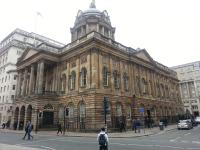
Liverpool Town Hall
Liverpool Town Hall is probably the most significant building still standing in Liverpool that is directly connected to the trade in enslaved Africans. Not only was the building erected at a time when Liverpool had just become the preeminent British slaving port, but according to Fox Bourne, it was Liverpool’s most notable slave traders who had contributed the funds for the building of the Hall. Once it was erected it was also where the ‘Company of Merchants Trading to Africa’ met to discuss the conduct of the slave trade and to elect its London representatives.
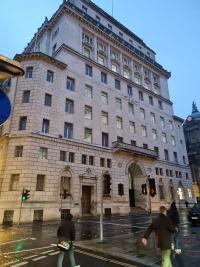
Martin’s Bank Building, Water Street
The burgeoning eighteenth and nineteenth-century financial industry of Liverpool benefited greatly from the town's involvement in slavery. Ten of the fourteen important Liverpool banks listed after 1750 were founded by slave traders. In 1831 the Bank of Liverpool began trading, many of the shareholders were former slave traders, the owners of slave plantations in the Americas or traders in the goods enslaved people produced. The first chairman of Bank of Liverpool was the slave owner and cotton merchant, William Brown, who would later build the Library and Museum on the street that bears his name. The Bank’s fortunes were linked with those of Liverpool’s merchants trading in slave-produced sugar, rum, tobacco and cotton from the Americas, trades that were significantly affected by the American Civil War in the 1860s. By the 1880s, however, the Bank had recovered enough to expand and in 1883 acquired Heywood's Bank that had been founded by the fabulously wealthy slave-trading Heywood brothers, in 1773.
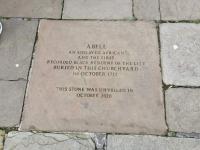
St Nicholas Church
On the 1st October 1717 'Abell a blackmoor belonging to Mr Rock' was buried at Our Lady and St Nicholas Church. His 'owner' was probably Samuel/Lemuel Rock, one of the town's early slave merchants. Over the years, Abell's final resting place would see the interment of many enslaved people and also many of Liverpool's most prolific slave traders, including Bryan Blundell, founder of the Bluecoat School. The enslaved and the enslavers lie side by side in Liverpool's most historic graveyard. In 2020 a memorial stone was unveiled acknowledging the interment of Abell at St Nicholas more than 300 years after his death.
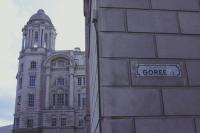
Goree
Goree (pronounced goh-ray) runs alongside the George's Dock Building (Queensway Tunnel Ventilation Shaft) and must be one of the most uniquely named streets in the country. Of all the thoroughfares in the city with connections to slavery this one most clearly memorialises Liverpool's involvement in the trade. It commemorates an island off the coast of modern-day Senegal where ships would go to purchase enslaved Africans. Throughout most of the 18th century the island was controlled and used as a trading post by the French, but during the Seven Years War 1756-63, it was captured by the British and it was probably this event that led to the name being used as a Liverpool thoroughfare.
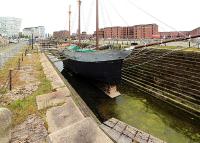
Canning Graving Docks
The Canning Graving Docks, constructed during the mid eighteenth century, are the oldest part of the Liverpool dock system that can still be seen above ground. Just as Liverpool merchants had been responsible for the building of Britain's first commercial wet dock in 1715, at the same time they also pioneered the construction of the nation's first commercial graving dock. These facilities would prove critical to the city’s development as a global maritime powerhouse and would lead to more graving docks being built in Liverpool throughout the century. The Canning Docks are the oldest example still in existence and were renamed for the former Liverpool MP and Prime Minister, George Canning, after his death in 1827.
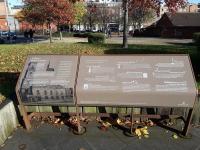
St Thomas’ Memorial Garden
Liverpool's role in the slave trade is actively understated in the town's historic memorials. One of the heritage projects created as part of the recent Liverpool One development is the St Thomas Memorial Garden, which occupies a piece of land that was once the graveyard of St Thomas Church, built on Park Lane in 1750. The church was closed in 1906 and subsequently demolished.
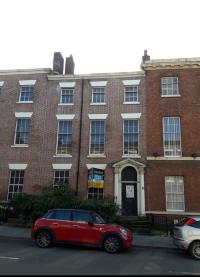
Felicia Hemans 1793-1835
On 16 May 1835, the famous Liverpool poet, Felicia Hemans (1793-1835) died. She was born in Duke Street in a house that still stands (pictured below). Her father, George Browne, was a Liverpool slave trader who invested in at least 5 slaving voyages, two of which he partnered in with Felicia's maternal uncle, John Michael Wagner. According to Rev James Aspinall, the son of a slaver himself, Hemans family also owned "large estates in the West Indies". For this reason he explains quite humorously, that she had grown up not liking the other great Liverpool poet and author of her day, William Roscoe, as she had only heard negative stories of the abolitionist in her household. A number of Britain's greatest literary figures of the 18th &19th centuries had connections to both slavery and the slave trade including another great female writer, Elizabeth Barratt Browning.
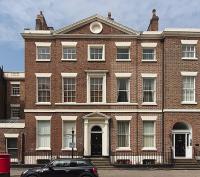
Gladstone and 62 Rodney Street
On 29 December 1809, William Ewart Gladstone, widely regarded as one of Liverpool’s most notable figures and one of Britain’s most significant prime ministers, was born at what is now 62 Rodney Street. He was the son of John Gladstone, one of the largest British slave owners, whose wealth was built on plantations in Jamaica and Demerara.
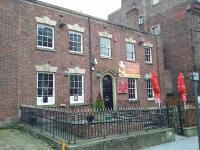
William Rice’s House
Wealth accrued from slavery and the slave trade totally transformed the built environment of Liverpool. Industrial buildings such as sugar refineries and warehousing erected to process and store slave-produced goods dotted the landscape. Fine residential buildings sprang up throughout the eighteenth century that provided slavers the opportunity to display their wealth architecturally. Unfortunately, most of Liverpool's Georgian buildings were lost in the late Victorian period and during the twentieth century, but some of these palatial homes survive and are now amongst Liverpool's most treasured edifices.
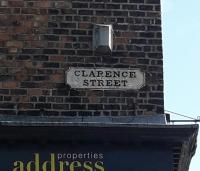
Clarence Street
In 1792 the Duke of Clarence, later William IV, used his maiden speech in the House of Lords to defend the slave trade. Liverpool responded by naming a street in his honour, laid out in 1796. In 1800, after another particularly rousing Lords address opposing abolition, he was made a freeman of the town. A delegation from the council travelled down to St James Palace to present the duke with the 'Freedom of the Borough in a Gold Box'. The delegation gave an address expressing 'the just and grateful sense which the Council of Liverpool have of your Royal Highness's active and able exertions in Parliament for the trade and commerce of the kingdom in points in which the town of Liverpool is particularly interested.'
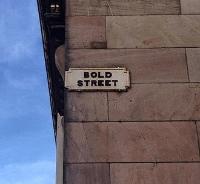
Bold Street
Bold Street was once known as the “Bond Street of the North”. It is named after Jonas Bold 1745-1822, who leased the land from Liverpool Corporation around 1785-6. He also owned a plot at the top of the street, which is now the site of St Luke’s Church. Bold Street was the home of the Lyceum Club, built by the famed architect, Thomas Harrison and opened in 1802. It was built to house the Liverpool Library, which is thought to be the oldest public subscription library in the country, founded in 1757. Many of the founder members of the Lyceum traded in enslaved Africans.
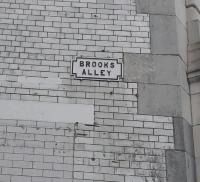
Brooks Alley
Many streets in Liverpool commemorate merchants who became wealthy through the slave trade. Some of the most well known highways in the city bear their names. Bold Street, Slater St and Hardman Street are all named after slaving families, but one of the most notorious of thoroughfares named after the African traders is now little more than a back street, Brooks Alley. This ancient lane is named after the Brooks family, of whom no less than six individual members of the clan invested in slaving voyages.
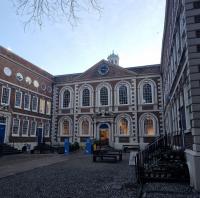
The Liverpool Blue Coat School, regarded as one of the city’s most prestigious educational institutions, was founded in 1708 by Bryan Blundell (1675-1756), a prominent slave trader. Blundell’s fortune, deeply rooted in the profits of the transatlantic slave trade, laid the financial foundation for the school. Over three generations, the Blundell family became one of Liverpool’s most influential slave trading dynasties, using their wealth not only to maintain their own status but also to fund public institutions like the Blue Coat.
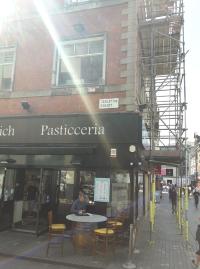
Tarleton Street and Banastre Tarleton
Tarleton Street is named after the Liverpool slave-trading Tarleton Family. The Tarletons produced three generations of slave traders. The most famous member of the family was Banastre Tarleton 1754-1833 (pictured) who fought famously for the British during the American War of Independence and fought just as valiantly in the House of Commons to prevent the end of the slave trade. Banastre’s grandfather was the first Tarleton to trade in enslaved Africans, his father, John was also involved, as were his three brothers, John, Clayton and Thomas.

Dorans Lane
The tiny thoroughfare that connects Lord Street to Harrington Street is known as Dorans Lane, named after Felix Doran. There were two Felix Dorans, father and son, both of whom were slave traders and invested in at least 100 voyages between them, transporting tens of thousands into slavery in the Americas. Felix Sr (1708/09-1776), had come to Liverpool from Ireland and was investing in slave ships leaving from the port by 1737. The 1767 Gore's Liverpool Street Directory shows Doran living on Lord Street, possibly near to the lane that now carries his name. On the 25 August,1769, an advert for a runaway published in the Liverpool General Advertiser makes mention of Doran:

Heywood’s Bank, Brunswick St.
In Brunswick Street stands the Grade II listed Heywood’s Bank, Liverpool’s oldest surviving purpose-built bank, erected in 1800. This was the place of business of Arthur and Richard Heywood, prominent Liverpool merchants who were the sons of Arthur Heywood, a successful Liverpool slave trader who had founded the bank in 1773 with his brother Benjamin.Ten out of the 14 important Liverpool banks founded after 1750 were owned by slave traders. Heywood Brothers bank was eventually bought by the Bank of Liverpool which also acquired Martin's Bank. Barclays eventually acquired the Bank of Liverpool. The building now houses a bar.
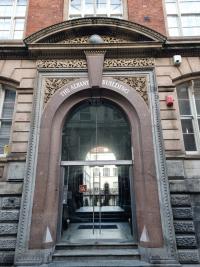
The Albany Buildings, Old Hall Street
The Grade II* listed Albany Buildings was built by the cotton merchant and banker, Richard Christopher Naylor (1814-1899). He was the youngest son of John Naylor, of Hartford Hill, Cheshire and Dorothy, sister of the Liverpool slave trader and banker, Richard Bullin. Richard and his brother Christopher were amongst the main beneficiaries of Thomas Leyland, their maternal uncle, a successful slave trader and one of the richest men in the country at the time of his death in 1827. Thomas Leyland partnered with his nephew Richard using their wealth derived from slave trading to found the Liverpool bank, Leyland and Bullin, in 1807. Richard’s brother, Christopher, later joined the firm. Both Richard and Christopher died childless and they left the bank, their fortunes and numerous estates to the three sons of their only sister, Dorothy. The Albany, completed in 1856, was a groundbreaking commercial building designed to serve Liverpool’s thriving cotton trade. Purpose-built for cotton brokers, it featured private offices tailored to their needs, a central courtyard allowing natural light and ventilation, warehousing in the basement and proximity to Liverpool’s bustling docks. According to one author, during the 1850s Liverpool’s trade in slave produced cotton was worth £14 million annually.
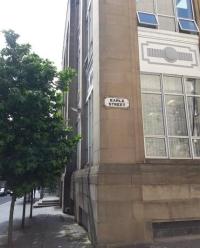
Earle Street
Earle Street, Earle Road and Earlestown are all named after members of the Liverpool slave-trading dynasty, the Earle Family. The Earle Family of Liverpool were heavily involved in slavery and the slave trade over four generations, as slave ship owners, captains, and plantation landlords. John Earle 1674-1749(pictured) came to Liverpool from Warrington in 1688, joining the house of William Clayton, a Member of Parliament and a well-known merchant who partnered John in financing one of the first legal slave ships to leave Liverpool, the ‘Union’, in 1699. By 1700, John had established his own business and was trading in a range of commodities including: wine, tobacco, sugar and iron goods, whilst also investing in another two slaving voyages that year, firmly establishing the family interest in slaving that would continue for over a century. In 1709, John was elected Mayor of Liverpool and at some point purchased land off Old Hall Street where Earle Street is named in his honour.
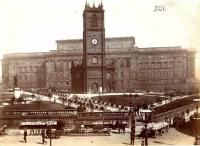
St John’s Gardens
St John's Gardens (Churchyard) at the rear of St George's Hall is the final resting place of a number of enslaved people who lived and died in Liverpool. Also interred in the cemetery are free black people who lived here in the 18th century. The church also saw many baptisms of black people during the period. The following are a sample of references from St John's burial register: 29 April 1767 Mr Hamilton’s Black, Sambo 31 October 1767 Geo Campbell’s Black, Hamilton 25 November 1767 Capt Bailey’s Black 09 December 1767 Capt Morris’ Black, Campbell 25 January 1768 Mr Allen’s Black, Grainge 01 February 1768 Capt Hawkins Black, Coffee
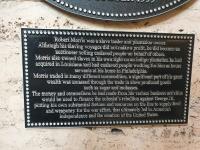
Blackburn Assurance Building, Dale St
Founding father, signatory of the Declaration of Independence and ‘financier of the American Revolution’, Robert Morris, was born in Liverpool. Much is known about his career as a prominent figure in the revolution but less is discussed about his involvement in slavery. He was a slaveowner, trader and dealer in slave-produced goods, who accumulated great wealth allowing him to establish the Bank of North America, the oldest financial institution in the United States. He also owned vast tracts of land in a number of states including half the state of New York.
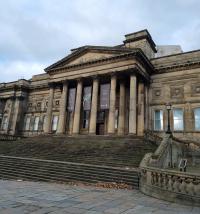
Liverpool Central Library and World Museum
Liverpool's stunning Central Library and World Museum have their origins in wealth accrued through slavery. Sir William Brown 1784-1864, the benefactor of both institutions, became one of the premier importers of slave-produced cotton into Liverpool during the first half of the nineteenth century and was the owner of many enslaved people on the family's plantations in the Deep South. Born in Ballymena, Ireland, his family travelled to the U.S. where they established the firm of Alexander Brown & Sons. After arriving in Liverpool from Baltimore he established a branch of his family firm here, in 1810. By 1826, after taking on a partner, Joseph Shipley, the firm was to become responsible for acquiring more cotton from the U.S. than any other mercantile house in Britain. In 1838, the company was responsible for the sale of 178,000 bales, equivalent to a massive 15.8 percent of all imports into the country for that year. The Liverpool house also took consignments of tobacco and other goods but cotton was the main focus and by 1844 Brown held one-sixth of the trade between Great Britain and the United States. According to Richard Cobden, "There is hardly a wind that blows, or a tide that flows in the Mersey, that does not bring a ship freighted with cotton or some other costly commodity for Mr Brown's house."
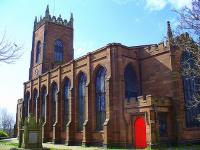
St George’s Church, Everton
In the early 19th century Everton was well established as the most fashionable area for the rich merchants of Liverpool to settle in. The baptism registers of the local church and grade I listed, St George's, Everton, show that after the abolition of the slave trade in 1807, merchants would still bring enslaved people from their plantations in the colonies to Liverpool. Interestingly, the first minister at St. George's, was the son and namesake of the prominent slave trader, Robert J. Buddicom, who bought ten shares in the church at £100 each on its inception. A number of the original shareholders were former slave traders or slave plantation owners and are buried in St George’s graveyard, including Charles Horsfall, whose family would become arguably the most important Liverpool church builders of the nineteenth century. Many of Liverpool's finest surviving 18th and 19th century churches have their origins in wealth accrued through slavery. Baptism: 26 Oct 1817 St George, Everton, Lancashire, England Charles Wallace - Abode: Everton Occupation: Manservant Notes: An African Negro Servant to George Sealy Esq. Late of Brazil now of Everton, aged 18 years Baptised by: R. P. Buddicom Minister Baptism: 18 Feb 1818 St George, Everton, Lancashire, England Nicodemus John Nicholas - [Child] of Nicholas Abode: Demerara Occupation: Gentleman's Serv. Notes: 23 years old, born in Santa Cruz Baptised by: R. P. Buddicom Minister Baptism: 20 May 1818 St George, Everton, Lancashire, England Antonio Samuel Wylie - [Child] of Wylie Abode: Everton Occupation: Servant to John Wylie Esq. Notes: Born in Mozambique carried to Brazil as a slave.
Conclusion This website serves as a gateway to understanding Liverpool’s deep and long lasting historical connections to Africa and the Americas through transatlantic slavery. By mapping key locations associated with this history, we aim to provide an accessible and engaging resource for exploring how Liverpool’s economic, cultural and social growth was deeply entwined with the exploitation of enslaved peoples and the wealth generated by colonial exploitation.
Each mapped site represents a fragment of this intricate history. From the docks where ships departed on slaving voyages, to the grand buildings funded by profits from goods produced by enslaved people, these locations tell the story of how slavery permeated nearly every aspect of Liverpool’s development during the eighteenth and nineteenth centuries. They also highlight the ways in which the city’s merchants, institutions, and industries benefited from this system, while communities across Africa and the Americas endured immense suffering and loss.
This resource is designed not only to inform but also to foster reflection and dialogue. By shining a light on Liverpool’s ties to slavery and colonialism, we hope to confront the legacy of these historical injustices and their continuing impact on the modern world. The website encourages users to connect with these stories and to think critically about how the past shapes our present, from societal inequalities to ongoing discussions about reparations and historical accountability.
Through this platform, we aspire to ensure that these histories are neither forgotten nor marginalised. Instead, they should serve as a foundation for greater understanding, education, and action, allowing us to confront uncomfortable truths while honouring the resilience and contributions of those whose lives were irrevocably shaped by transatlantic slavery. By preserving these memories, Liverpool—and the wider world—can take meaningful steps toward acknowledging and addressing this shared history.
Please share your experience of using this app by completing this quick survey: